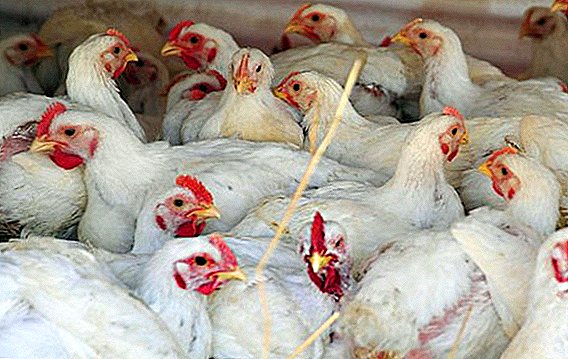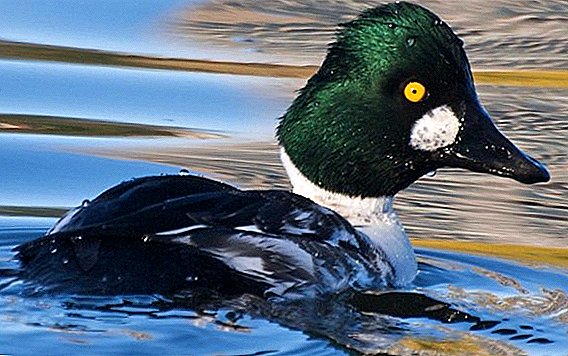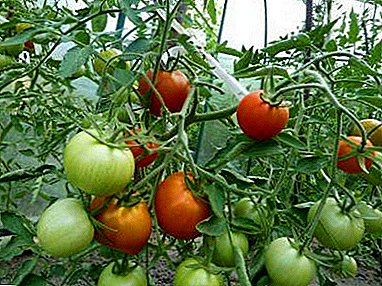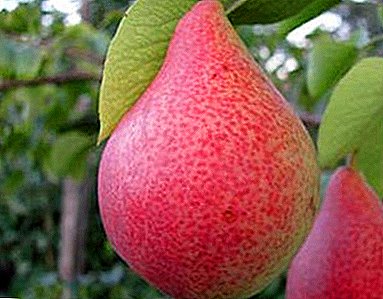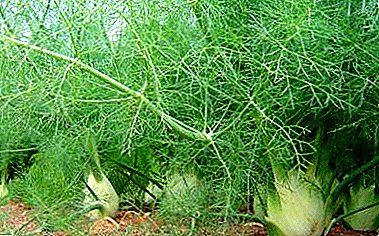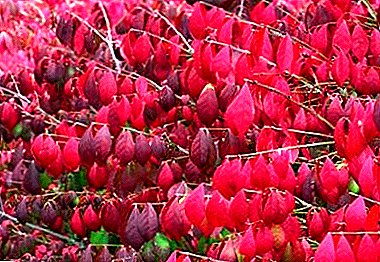
Such a popular plant among landscape designers as a winged euonymus, literally conquered its eastern lightness and beauty.
This deciduous shrub was bred in Japan, China, Korea and found many fans in the open spaces of our country.
With the help of winged euonymus, you can create truly unique landscape design options.
Even if you don’t think too much, but just put a winged euonymus on the plot, everything will immediately be transformed beyond recognition.
Plant description
The height of the shrub is about 3 meters, for a year the plant adds about 15 cm in height. The bush has an interesting, unusual bark, cork wingsthat are at the edges of the shoots. This view creates the impression of airiness and lightness.
The leaves are located opposite, the leaf in its shape resembles an ellipse. On the outside the leaves are green, and on the inside they are light. Leaf length approximately 4 cm.
 In autumn, the leaves change their color to purple with a red tinge or burgundy.
In autumn, the leaves change their color to purple with a red tinge or burgundy.
The time of the most active flowering falls on May and June, blooms unusually beautiful greenish-yellow flowers.
Unfortunately, these flowers are hardly noticeable when viewed from far away.
Euonymus fructifies in the autumn-winter period. When its leaves are still green, the fruits stand out especially beautifully against the background of greenery. If you look at a bush from a distance, you might think that this is not the fruit at all, but the flowers of the plant.
Its fruits have an unusual original reddish tint and leathery box, when ripe, it acquires a color like a real mandarin. These boxes remain hanging on the branches of the plant for much longer than the leaves themselves, and remain on it for almost the entire winter season.
INTERESTING TO KNOW! When the time comes and the leaves change color, the boxes burst at the seams, forming a kind of parachutes, under which, like the prashutists, the seeds hang. They are blown away by the wind, so the plant multiplies. Its seeds cover a yellowish rind.
Only the euonymus has such unique fruits. By the way, they are not as toxic as is commonly believed, but still, they have poisonous alkaloids. In order for an adult to get poisoned with these fruits, they should be eaten in large quantities.
And since they taste unpleasant, it will be very difficult to absorb so much to get a serious poisoning. In small doses, fruits cause vomiting and diarrhea. And who of the adults will come up with the idea of eating them? Here children can try out of curiosity, here we must look, so that children will not taste them.
A photo
The appearance of winged euonymus is presented in the photo below:





Advantages and disadvantages
Among the advantages worth noting:
- Among the main advantages of the shrub can distinguish it frost resistance. Even with severe cold frosts, the plant does not freeze.
- Good tolerance of smoke and air pollution allows you to grow it even in urban areas.
- Unresponsive to fertilizers, transfers the most different types of fertilizers.
- The soil acidity is of no particular importance for this shrub; the main thing is that it is fertile and well dendriated.
- With proper care for the shrub, you can get a fluffy and thick crown.
- The winged euonymus has rightly earned popularity among landscape designers, as due to the color of its leaves and shoots, it will noticeably stand out among many other plants. In addition, the fact that it can grow quite large and "fluffy" will make it possible to create from it the main object and pride of a garden or another site.
- Its contrast attracts and fascinates, and those that change color from reddish to orange appear as flowers, and this gives the impression that the euonymus is able to bloom throughout the year.
- The main noteworthy of the Winged Euonymus and, in fact, that which fully explains its name, are its beautiful fruits. They are located in a box and when it opens it will fly away, blown away by the wind.
Minuses:
- Euonymus doesn't like shade and best of all for it will be a separate place without surrounding other large plants, casting a shadow on it.
- Bush picky to watering mode. Therefore, you need to constantly look after him in dry weather and conduct high-quality drainage.
- This shrub grows rather slowly.
Landing
 Euonymus planted in spring or early autumn. It is desirable that the landing site was shaded. Avoid areas with high groundwater storage. The euonymus grows abundantly, so the site must be selected at some distance from the buildings and trees.
Euonymus planted in spring or early autumn. It is desirable that the landing site was shaded. Avoid areas with high groundwater storage. The euonymus grows abundantly, so the site must be selected at some distance from the buildings and trees.
Before planting, you need to properly prepare the ground. Euonymus loves a porous, light soil with good water permeability. In case of increased acidity in the soil, it should be liming.
Pit for planting need to dig in advance, at least two weeks before the scheduled disembarkation date. In volume, it should be a half to two times the root system of the seedling.
The bottom of the pit can be drained using sand and the top layer of the soil extracted from the pit with the addition of compost.
Next, add a little lime to the pit to reduce the acidity of the soil.
Carefully lower the seedling into the pit, straighten the roots and fall asleep with a mixture of soil and compost, gradually tamping. The root collar of the euonymus, as a result, should be flush with the surface of the site.
Immediately after planting, watering around the seedling should be done. When land subsides, add some more of it.
Care
Euonymus is not particularly capricious in lighting and temperature conditions. It is frost resistant and easily tolerates temperature drops. You can put it on a shaded area, but the abundance of sunlight also does not harm it.
Watering should be done as needed. In dry weather, in the absence of rain, the soil should be moderately wet. Watering this plant is not very fond of, therefore, with prolonged rains, it is not necessary to water the euonymus at all. Slightly more moisture is required in the initial stages, while the shoots are still quite young.
In the period of spring-summer, about once every 12-15 days should be made dressing. Fertilizers are suitable both mineral and organic.
To give a variety of forms to bushes of an euonymus, it is possible to cut branches that have reached a certain height on the crown. This is usually done in the spring.
Caution! Euonymus juice is poisonous. Therefore, it is necessary to observe safety measures when trimming - work carefully, preferably in special gloves.
It is important to monitor the condition of the soil, periodically loosen the soil and clean up weeds that sprouted nearby.
Only young saplings need to be prepared for winter (up to 3 years). They can be covered with fallen leaves or spruce branches. More mature plants do not need special attention in winter: you can restrict yourself to mulching with leaves or sawdust.
Breeding
Cuttings

- In early summer, in June or early July, we cut a certain number of raised shoots up to 7 cm in length from an adult plant (preferably 4-5 years) with preservation of internodes. Cut off at an angle.
- We process cuts-wounds on the branches of the mother bush, and each cut of the cutting is processed with a growth stimulator for the correct formation of the root system.
- The cuttings are placed in a nutrient medium with the presence of peat and sand. It is desirable to place the shoots in high temperature conditions. Ideally - in the greenhouse.
- Approximately in a month the first shoots will appear, and by the beginning of autumn a powerful root system will be formed. Now the cuttings can be transplanted to the place of growth.
Important! The main factor in successful grafting of euonymus is the absence of damage on the stem. In addition, you need to monitor the soil moisture and avoid early contact with sunlight.
Seeds
- To begin with, one should hold the seeds in moist sand for 3-4 months. The temperature should not be longer than 3aboutWITH.
- Peel the seeds and place them for a couple of hours in a solution of low concentration of manganese.
- Planting to produce in the soil with abundant presence of humus and sand.
- For two months, keep the seeds under the film for rooting.
- Continuously maintain soil moisture.
Diseases and pests
 Virtually all varieties of this shrub prone to attack by pests and diseases.
Virtually all varieties of this shrub prone to attack by pests and diseases.
If nessesary chemical sprayingthen the best time to control and control pests is the period from mid spring and early summer.
If the lesion is small, the infected branches can be cut off.
Mealy dew is one of the most common fungal diseases.
This is usually a milky-white or gray-brown bloom on the upper part of the foliage, which often causes it to yellow, and in more advanced cases it leads to the death of the plant.
It is very difficult to monitor the disease, it is better to start taking preventive measures right away, it’s easier and eventually it will be cheaper
IMPORTANT! The bush should receive the necessary amount of sunlight.
Ensure good air circulation at the landing site and a minimum level of humidity around the foliage. If possible, avoid over-watering.
In the spring, the shrub should be treated with antifungal agents that can prevent the occurrence of the disease and the appearance of harmful organisms and parasites.
With due care in care, as the plant care is not the easiest, birch will please you and will become a real star on your site, to the envy of your neighbors.
Use in landscape design
Due to the fact that the euonymus perfectly takes root in our climate, it is often used as an element of decoration:
- The "hedge" from this plant and braiding it will give a very unusual and beautiful view to the summer cottage.
- Because of its bright, rich color, the euonymus will be a “fresh note” in combination with compositions from other shrubs and trees.
- Interspersing the euonymus with rose bushes and wild rose, you can achieve the unique design of a small alley in front of your house.
- The neighborhood with flowers does not interfere with the roots of the euonymus, so it will look great flower bed, in the center of which it is located.


